
Walter Marsh
Walter is a writer and editor living on Kaurna Country.
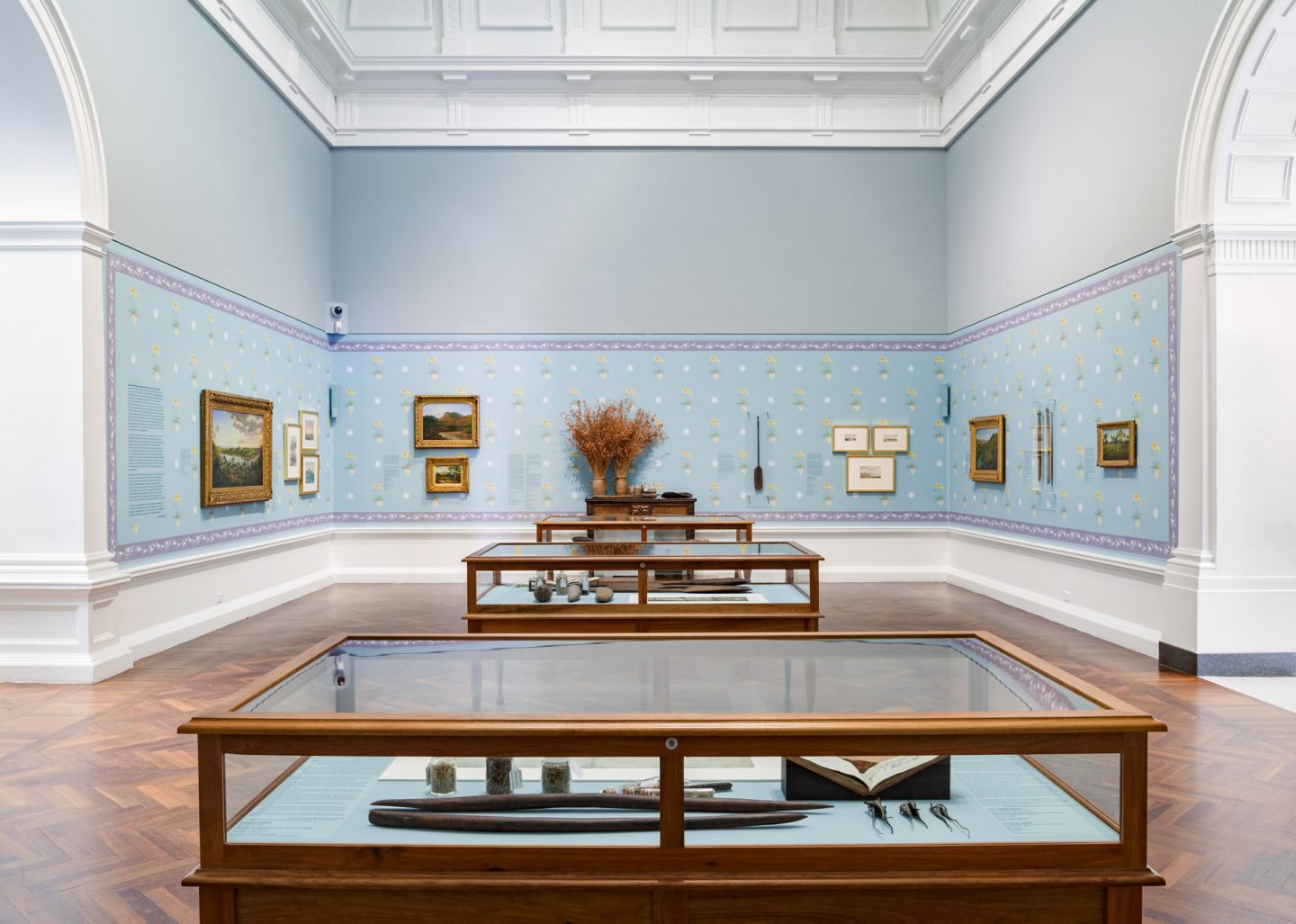
A centrepiece of Tarnanthi 2019 places the creations of First Nations peoples and colonisers side-by-side to offer a more complete picture of Aboriginal agriculture, land management and sovereignty.
In recent years the writings of Bruce Pascoe and Bill Gammage have drawn national attention to the diverse and sophisticated systems of Aboriginal agriculture and civilisation that flourished before European settlement. With Bunha-bunhanga: Aboriginal agriculture in the south-east, Wiradjuri/Kamilaroi artist Jonathan Jones places colonial artworks alongside the tools and objects of Aboriginal people to illustrate this deeper reading of the historical record.
In the Elder Wing’s Gallery 1, the 19th century landscapes and floral wallpaper could recall any number of historic Victorian era buildings. But the eye soon notices that the wallpaper’s repeating motifs are not the usual British symbols of prosperity like wheat or maize, but the murnong (yam daisy) and kangaroo grass. And between landscapes by the likes of Eugene von Guérard, George French Angas and Louis Buvelot are carefully crafted objects of wood and stone, adding depth and context to the painted scenes that their European creators rarely considered.
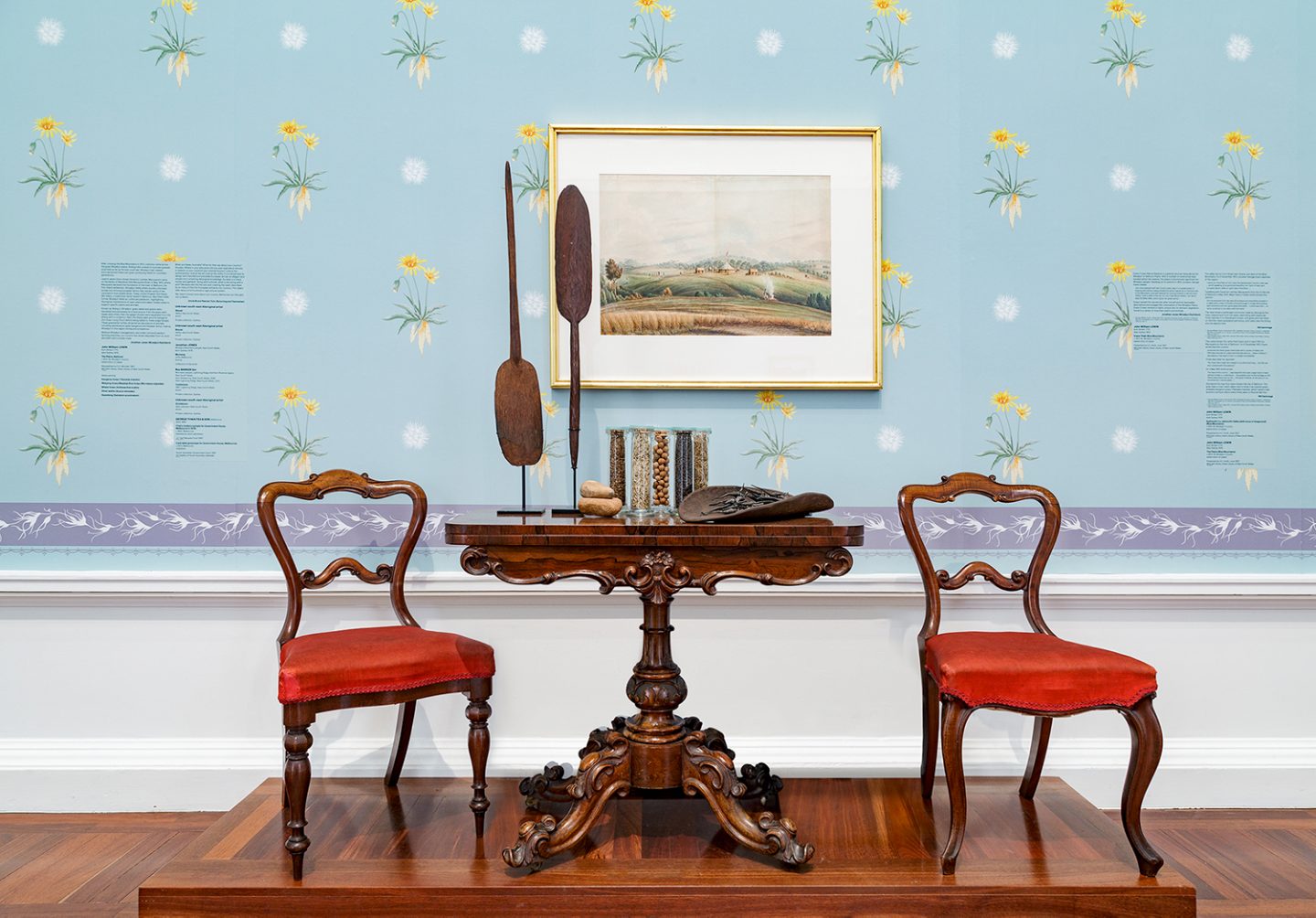
In both Gammage and Pascoe’s work, the written accounts and visual records of the first wave of settlers are important sources; by documenting the bountiful landscapes they viewed as ripe for settlement, the colonisers unwittingly left behind a vivid record of the lands they and their successors would seize and transform. While the oral traditions and memories of First Nations peoples offer their own vivid accounts, it’s largely through the tangible primary records of these colonisers that Gammage and Pascoe have been able to make wider Australia take notice – a sad irony lost on neither.
“I wasn’t rewriting history, the history was written by other people,” Pascoe told The Adelaide Review in June. “It was written by the explorers and the so-called ‘pioneers’, so there was no ‘rewriting’ going on, just lifting away the veil. It’s going to be hard for Australia to swallow the extent of destruction, but their forefathers wrote about it – how within weeks of sheep coming on to a property, all the vegetation was gone.”
In Bunha-bunhanga, museums from around the country have been scoured for objects and tools ‘collected’ on the frontier: an artfully carved and fire-hardened shovel from Ganmain, New South Wales, an ancient-looking grindstone from Murron, Victoria, heavy stone picks from along New South Wales’ Bogan River, and sharpened digging sticks from various locations used in the tilling of soil and harvesting of cultivated fields of roots and vegetables – in a word, farming.
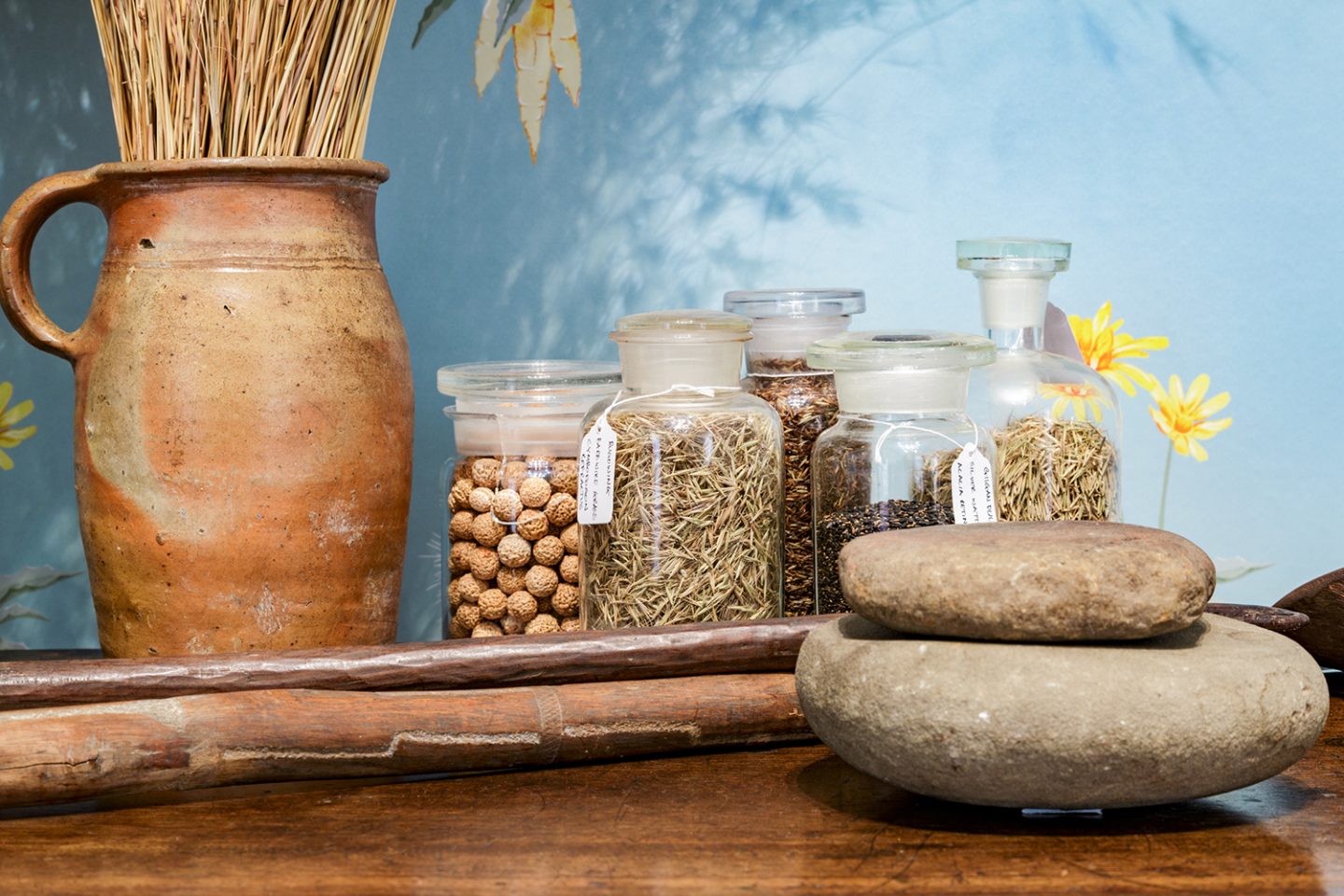
“It’s the first time that the objects have been given prominence, and recognised as the tools that Aboriginal women and men were using to till the soil,” Tarnanthi artistic director Nici Cumpston says. “It unpacks it a bit more for the audience, so they can get a deeper understanding that it’s not just a piece of wood, it was used in a specific way, it was hardened over the fire, they’re finely tuned implements.”
All of which bear material witness to the lives, societies and practices that flourished long before the arrival of white men with easels. Unlike the names of the painters, the creators of these objects and their true purposes were often unknown or unrecorded upon collection. It’s a potent symbol of the incuriosity and ignorance with which they were picked up from sites where they may have been used for years, decades, centuries.
It’s left to Jones, Pascoe, Gammage and researcher Zena Cumpston, Nici’s sister, to join the dots for us through carefully researched, accessibly written text. George French Angas’ 1844 watercolour of Mount Gambier’s Blue Lake, for example, illustrates a region the artist himself described as “fresh from the hand of nature”. Close inspection of his own painting reveals this is untrue, as Jones points to the cleared grassy fields, the distinctive bands of trees and the plume of smoke in the distance – all signatures of the land management practices of the Boandik people.
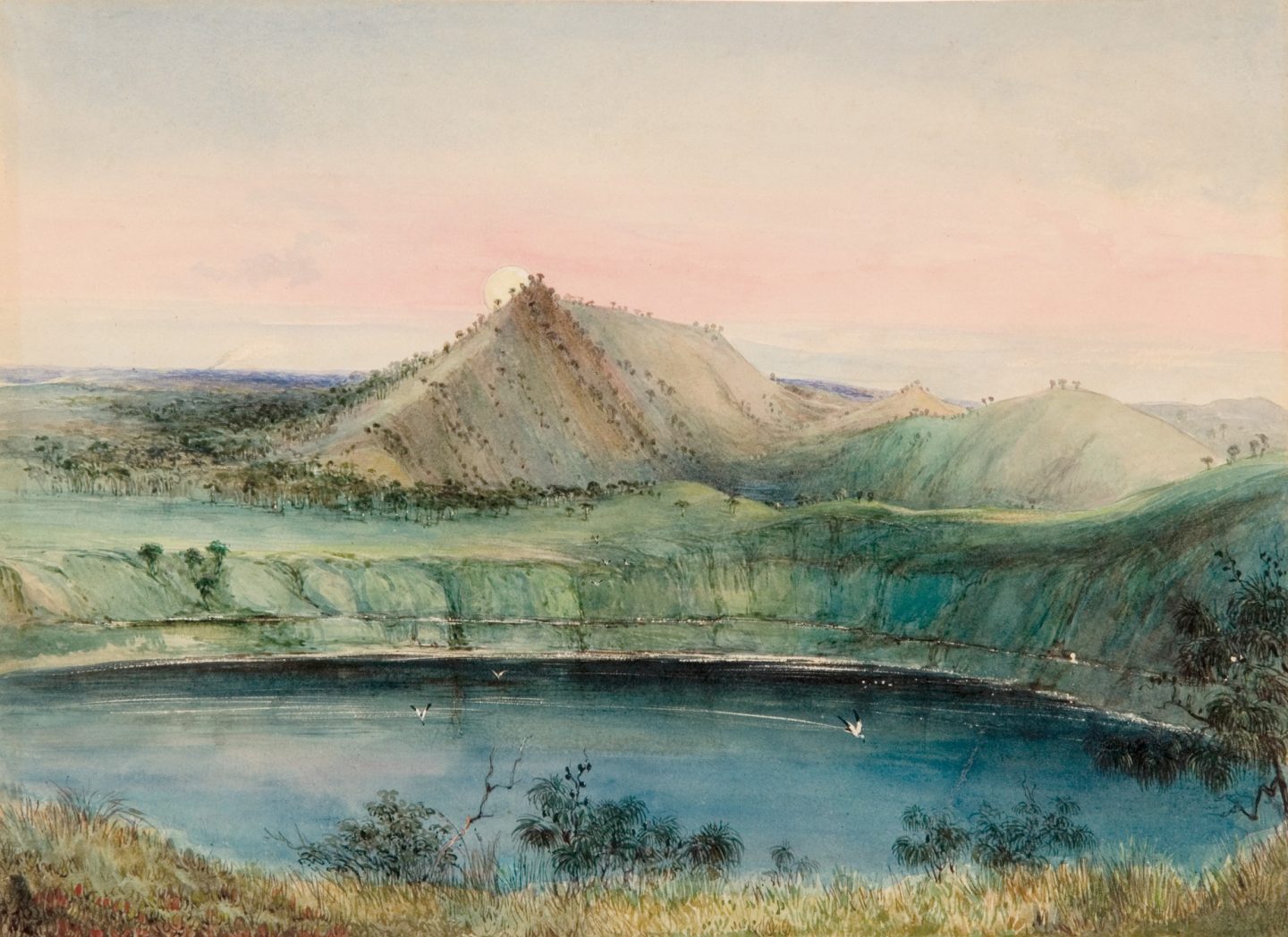
But perhaps this ignorance is not so hapless; in another caption, Jones reflects on a 20th century Museum of Victoria curator who described wooden shovels as “amongst the rarer relics”, despite evidently being a common tool. While the display cases of Australian and overseas institutions abound with boomerangs, spears and shields – items that support a view of First Nations societies predicated on hunting and conflict – the scarcity of domestic, agricultural tools suggests a more wilful omission.
Elsewhere, a rarely displayed sketchbook by early South Australian surveyor general Edward Charles Frome captures a Milmenura village in the south-east, a cluster of a dozen or more established homes that jars with the usual colonial-era scenes of scattered groups around campfires. Tellingly, Frome annotates the scene with “burnt by me, October 1840”, part of reprisals for the deaths of survivors of the 1840 Maria shipwreck.
The story continues at the Museum of Economic Botany, where Jones has created a series of large-scale grindstones in a building that, like the Art Gallery of South Australia itself, was conceived as a 19th century monument to knowledge. Western knowledge, that is.
The long-term effects of that blindness can be readily observed today; in one caption, Pascoe wryly reflects, “Knowing how this country came to be in such benign condition is an important agricultural question, especially in an age when a ‘commission’ cannot retain sufficient water in the Murray-Darling Basin to keep a fish alive.”
Bunha-bunhanga: Aboriginal agriculture in the south-east
Art Gallery of South Australia and Museum of Economic Botany
Until 27 January
Tarnanthi Festival of Contemporary Aboriginal and Torres Strait Islander Art
18 October 2019 – 27 January 2020
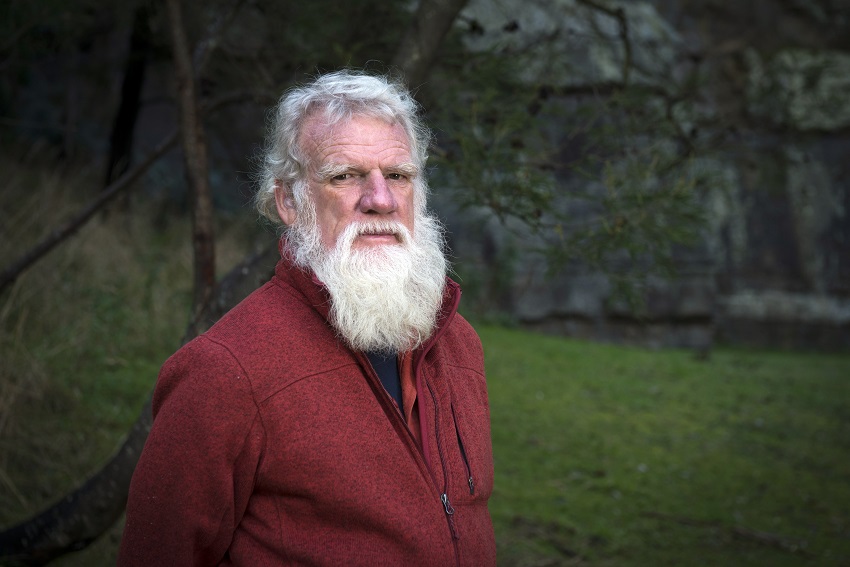
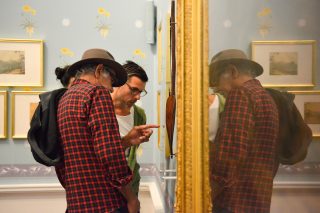

Walter is a writer and editor living on Kaurna Country.